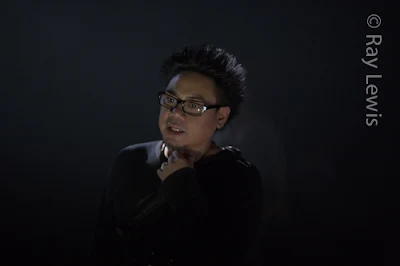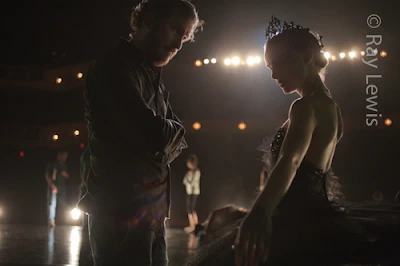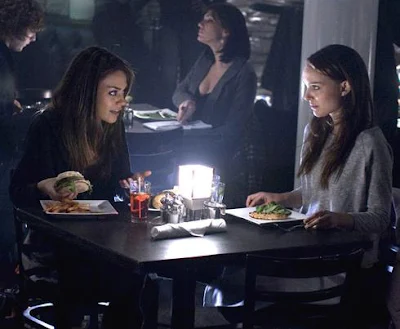Back to main page
BLACK SWAN, A TRIUMPH FOR 16MM FORMAT
The decision to shoot the opening film of Camerimage 2010, Black Swan, on Super 16mm was the result of collaboration between the recipients of the Director Duo Award at the Festival, the cinematographer Mathew Libatique ASC and Director Darren Aronofsky.
Vincent Cassell and Natalie Portman
The latest edition of British Cinematographer features this recent co-venture in the series of four films they have made together. The BC quotes Mathew as saying, “ Darren has liked the Super 16mm format as long as I’ve known him. “The Wrestler” which Aronofsky produced in Super 16 earned two Oscar nominations. Libatique says that the decision to shoot Black Swan on this format enabled them to cover scenes with a handheld camera that moved in tune with the ballet dancers while capturing an organic film look, including visual nuances in contrast and colors.
The winners of this year’s Duo Award met and first collaborated on two short films during the dawn of their careers as students at the American Film Institute during the early 1990’s. Black Swan follows in the wake of Pi (1998) Requiem for a Dream (2004) and The Fountain (2006).Although written for the stage originally Black Swan was primarily produced at practical locations in and around New York City. Libatique estimates that they spent 75 per cent of the 42 day production schedule on locations such as the Lincoln Centre and an apartment in Brooklyn.
Mathew Libatique, ASC
Darren Aronofsky and Natalie Portman
After Theresa DePrez, the Production Designer, had met with the lead characters to discuss the colours they felt right for their scenes in the apartment, says Libatique,” Darren also made his intentions clear about the atmosphere he envisaged. Libatique went to rehearsals of dance scenes and recorded every move with a Canon 5D DSLR camera.
That gave him both mental and physical pictures of what to anticipate. While shooting, with the exception of one scene, he covered everything from the ballet rehearsals and performances with a single Arri 416 camera mounted with Cooke prime lenses then was processed at 2K for the DI. The film stock was Fuji Eterna Vivid 160T 8643. The budget was around 13 million dollars.
Mila Kunis and Natalie Portman
Aronofsky setting up a shot
“Darren likes to be close to where the action in going to end. Our approach was to keep the film look as naturalistic and atmospheric as possible. We used soft light including a lot of practicals,” says Libatique. There was only one 100 foot dolly shot, at the end of which the leading actress Natalie Portman falls on a mattress in slow motion, a shot described by the New York Times critic Robert Allen as “a mystical touch.”
He continued to describe Black Swan as a supernatural thriller filmed against a balletworld backdrop which could also be thought of as a cross between “The Red Shoes” for which Jack Cardiff BSC created visual magic in 1948 and a dark, character driven mystery directed by Alfred Hitchcock.
Photos courtesy of Ray Lewis
Back to main page






































































